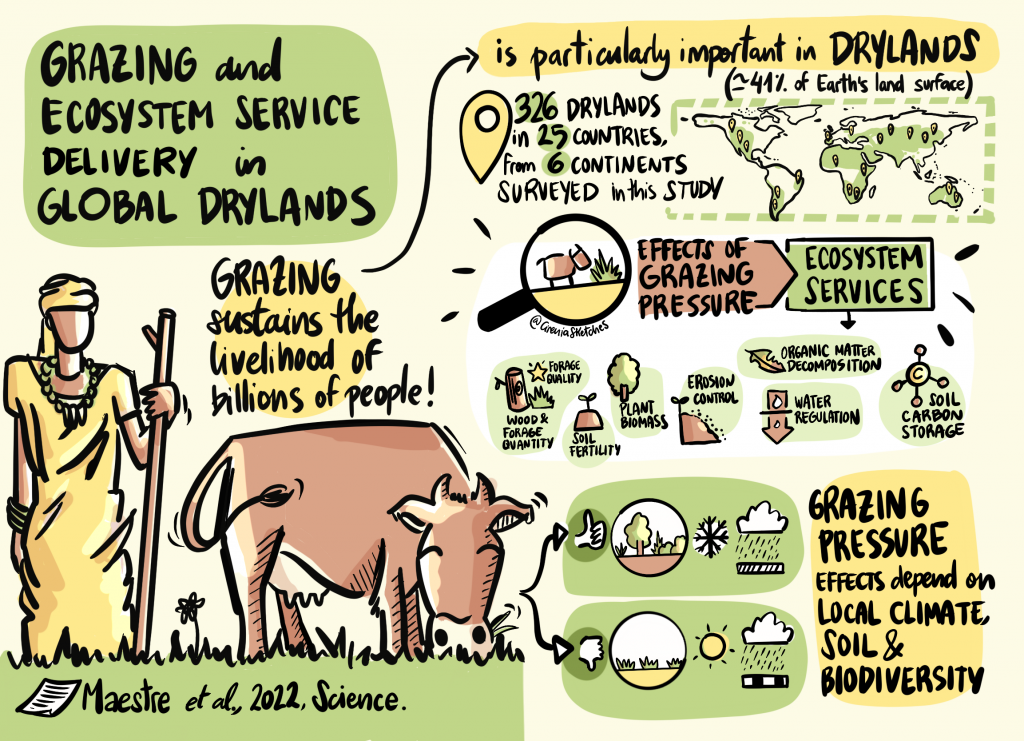Drylands make up nearly half the Earth’s land surface, and the effects of grazing livestock on their ability to support people, plants and animals is a key question as the global climate changes and warms. A new international study published in Science is the first to measure how grazing affects vital ecosystem services in drylands across the globe. A team of more than 100 researchers led by Fernando Maestre at Universidad de Alicante in Spain found that local climate, soil and biodiversity are critical to supporting drylands under increased grazing pressure as the human population grows.
Measuring conditions at 98 dryland sites on six continents, including some poorly studied dryland regions like Southeast Tunisia, the Sechura Desert in Peru and the Golestan province in Iran, the research team evaluated nine ecosystem services in more than 300 plots. Ecosystem services, such as soil carbon storage, erosion control and forage provisioning, are the products and processes of ecosystems that support human society. The team, which included researchers from Northern Arizona University, found that higher grazing pressure meant different things in different places, but that across the board, climate and biodiversity were linked to how ecosystem services fared.
While there’s not just one kind of effect of higher grazing pressure on drylands and the ecosystem services they provide, the researchers saw important connections, said Matthew Bowker, associate professor in the School of Forestry and Center for Ecosystem Science and Society at NAU and co-author of the new study. Bowker sampled sites near Page, Arizona, and near the Needles district of Canyonlands National Park in Utah in collaboration with Sasha Reed of the U.S. Geological Survey.
“In drylands that were cooler or where there was more biodiversity among grazing mammals and plants, grazing pressure was linked with positive impacts on ecosystem services,” Bowker said. “But in drylands that were warmer or lacked diverse species, the effects of grazing tended to be negative.” And that’s important because many drylands have already seen rising temperatures and changes in precipitation patterns as the climate warms.
“Our findings emphasize the importance of accounting for interactions between grazing and local abiotic and biotic factors when assessing ecosystem service delivery in drylands, which collectively constitute the largest rangeland area on Earth and host over 50 percent of total livestock,” lead author Maestre said on Twitter.
Bowker said all drylands used for grazing face challenges created by climate warming, which this study suggests will lead to reduced ecosystem services. “Land managers will need to be intentional and creative in order to help drylands continue to sustain the billions of people that live within them as the climate gets hotter,” he said.
Kate Petersen | Center for Ecosystem Science and Society




